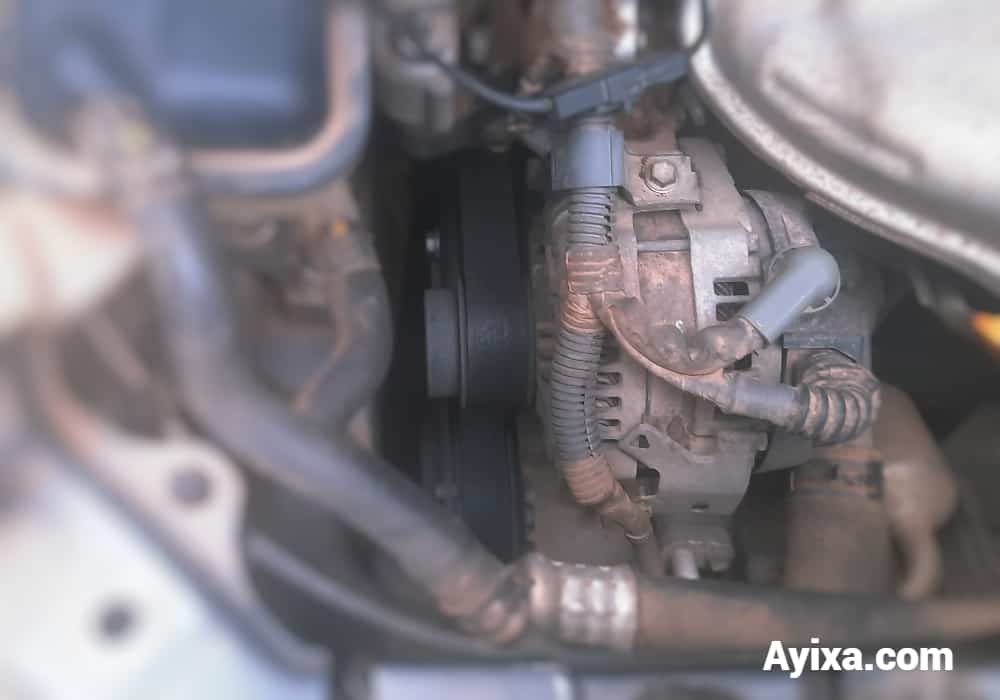If you plan to add aftermarket accessories – a sound system, a fridge, and others to your car or van then you should consider adding a second battery to your car to power the additional gadgets only.
This way your accessories do not compete with the OEM electronics for power from the starter battery putting you at risk of draining the car battery flat and not being able to start your car when you need to.
For one, you’ve increased the power draw of the car’s electrical system – alternator and starting battery.
One way to address this is to add a second battery to the alternator.
Should you choose to add the additional battery, then it might be of interest to you to confirm if it is bad for the alternator and also specifically what size of alternator (amps) or battery capacity (Ah) to use to successfully keep both batteries powered.
So, in this post, I share insights on if adding a second battery is bad for the alternator and also provide some guidance on the capacity of alternator and battery to use when adding a second battery.
How to Charge a Second Battery Using One Alternator?
Quick answer: Yes, you can charge two batteries and possibly more – the main starter battery and an auxiliary battery using one alternator and a battery isolator.
You may even use the car’s stock alternator to do this.
As you drive, the alternator will charge the main battery, and when full, move on to charge the auxiliary battery.
Read on for tips on what to keep in mind when sizing the alternator or battery to keep your electrical system working reliably.
Does adding a Second Battery Damage the Alternator?
If the car’s electrical system is in good condition and batteries are not deeply discharged or shorting, connections are firm and clean with no voltage drops, the connections are properly grounded, then there should be additional risk posed to the alternator when a second battery is added and connected to an isolator.
How the Isolator works
The alternator will prioritize charging the main starter battery and when full charge the second battery.
Also, the second battery can be discharged without the risk of the connected accessories discharging the starter battery.
You may want to check this post: What can damage your car’s alternator?
What Size of Alternator for Multiple Batteries?
You can use an 80 amp, 100 amp, or 140 amp good quality alternator or larger.
Your car’s stock alternator should be able to work as well, so there is no need to replace the alternator.
Keep in mind though that the size (amp) rating determines the maximum current (amps) the alternator can generate and how quickly it can charge a battery.
The smaller the amp rating, the slower the alternator will charge the battery.
What Size of Isolator (amps) to Use
When selecting an isolator, make sure that the current rating of the isolator (amps) can handle the combined power draw of all the accessories connected to it while charging the battery, or else the isolator will be damaged.
To work out the estimated battery charge current, multiply 0.3 x the battery capacity. If for example, you have a 100 amp auxiliary battery, the estimated charging current to the battery is 0.3 x 100 = 30 amps.
Next, add up the current draw of the connected accessories (check their nameplate current ratings) + the battery charge current.
Make sure this does not exceed the isolator’s rating or else it will be damaged.
The Maximum Capacity (Ah) of Battery to Use?
Car battery capacities usually range from about 40 -110 Ah.
Using this as a reference, aim to limit the secondary battery’s capacity (Ah) to this range when using the stock alternator as the alternator amp rating is optimized to efficiently charge this range of capacities.
Keep in mind that a large capacity battery will take longer to charge than a small capacity battery.
Related Topics
Can an Alternator Charge 3 Batteries?
Yes, it is possible to charge 3 batteries from one alternator using an isolator that can charge 3 batteries.
In general, avoid connecting batteries in parallel unless they are of the same capacity, age, and type for good battery life and performance.
Final Word
Yes, you can charge multiple batteries off an alternator using an isolator.
One battery – the main is connected as the starting battery with the secondary or auxiliary connected and powering the accessories.
Typical battery capacities connected to the alternator are in the range of 40 – 110 Ah so it is best to keep your battery selection limited to this range.
Related Posts
